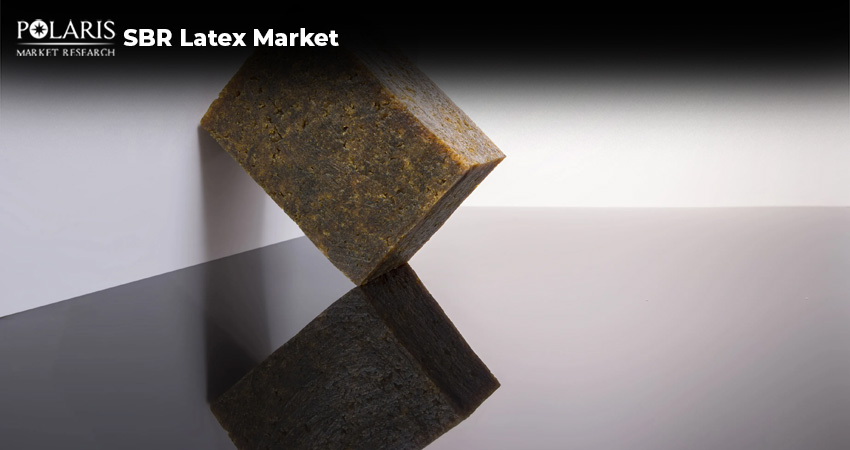Why Styrene Butadiene Rubber (SBR) Latex is A Versatile Material for Modern Manufacturing?

In the diverse landscape of synthetic rubber products, styrene butadiene rubber (SBR) latex has gained prominence as a go-to synthetic emulsion. With its superior mechanical properties and wide-ranging application potential, SBR latex has become indispensable in sectors such as construction, paper manufacturing, and textiles. Its unique combination of durability, flexibility, and affordability continues to open new avenues for innovation, especially amid growing sustainability and performance demands.
In this blog post, we explore the composition, production process, and key characteristics of SBR latex. In addition, we highlight the recent trends and innovations in SBR latex and their expanding applications across various industries. Read on!
What Is SBR Latex?
SBR latex is a synthetic compound made by chemically combining styrene and butadiene monomers. It's a liquid, water-based emulsion, meaning it's mixed with water to create a slurry. In SBR latex, the polymer chains are modified with carboxyl groups to help them bond with the inorganic materials in concrete and cement.
The ratio of styrene to butadiene in SBR latex is often adjusted to get specific properties such as flexibility, tensile strength, and chemical resistance. Higher styrene content offers improved hardness and strength, while more butadiene enhances elasticity and low-temperature performance. As a result, manufacturers can easily tailor SBR latex for specific industrial applications.
Key Properties of SBR Latex
Latex made from styrene butadiene rubber possesses several desirable characteristics that make it an ideal material for various industrial and commercial applications. These include:
Excellent Adhesion: SBR latex offers excellent adhesion to a wide variety of substrates, including metal, concrete, fabric, and paper. The polar styrene groups in SBR latex interact favorably with various surfaces, forming a strong and durable bond. This makes it especially beneficial in the construction, textiles, and packaging industries.
High Flexibility and Elongation: The butadiene content enables SBR latex to retain exceptional flexibility and elongation properties even after curing or drying. This makes SBR latex highly resistant to cracking under stress or movement, which is ideal for applications where surfaces undergo expansion, contraction, or vibration.
Abrasion and Wear Resistance: Another desirable property of SBR latex is its high resistance to physical wear and abrasion. This makes it suitable for coatings and composites exposed to surface stress, rough contact, or mechanical movement.
Water Resistance and Moisture Barrier: Although SBR latex is a water-based emulsion, its hydrophobic film gives it water-resistant properties. This is critical in waterproofing systems, cement admixtures, and coatings designed to reduce permeability.
Chemical Resistance: While SBR latex is less resistant to oils and hydrocarbons compared to nitrile butadiene rubber (NBR), it exhibits moderate resistance to dilute acids, bases, and salts. The chemical stability of this polymer emulsion in various pH environments makes it reliable for applications in coatings and adhesives exposed to mild chemical conditions.
Low Temperature Flexibility: SBR latex can maintain its flexibility in low-temperature conditions. This property makes the material suitable for use in colder climates or in applications where temperature fluctuations are frequent.
Industrial Uses of SBR Latex
The versatility of SBR latex is evident in its wide range of applications across various sectors. Below, we’ve detailed some of the most common uses:
Paper Coating: SBR latex finds widespread usage in the paper industry as a coating binder. Its use improves the printability, brightness, and smoothness of paper surfaces. In addition, its high binding strength ensures uniform pigment distribution, making it a staple for coated and glossy paper products.
Carpet Backing: SBR latex acts as a critical backing adhesive in carpet manufacturing. It offers the required elasticity and strength to keep the carpet intact when exposed to repeated stress. Additionally, it imparts dimensional stability in carpets and makes them resistance to wear and tear.
Construction and Cement Modification: SBR latex plays a crucial role in cementitious applications, such as concrete repair, waterproofing membranes, and tile adhesives. The ability of the synthetic compound to improve bonding, flexural strength, and water resistance makes it an essential additive in concrete repair mortars.
Textile Industry: In the textile industry, the compound finds applications as a binder for nonwoven fabrics and as a finishing agent to improve performance. It enhances texture, durability, and resistance to environmental factors in various textile applications.
Adhesives and Sealants: SBR latex is also used in the production of pressure-sensitive adhesives and general-purpose sealants due to its strong bonding ability and water resistance. Its use helps achieve a balance between adhesion and flexibility.
Recent Innovations and Trends
Here’s a look at some recent trends and innovations shaping the SBR latex landscape:
Bio-Based Alternatives: In recent years, a greater emphasis has been given to using partially bio-based styrene and butadiene monomers to lower the carbon footprint of SBR latex production. While commercial-scale implementation remains a challenge, bio-based SBR formulations are gaining interest.
Nanotechnology Integration: The incorporation of nanomaterials like nano-silica and graphene is being explored to improve the thermal and mechanical properties of SBR latex composites. These hybrid formulations offer excellent crack resistance and strength for demanding construction applications.
Digital Printing and Specialty Coatings: With digital printing technology gaining increased traction, paper coatings need to be fast-drying inks and smooth finishes. Manufacturers are modifying the properties of SBR latex to cater to these changing requirements.
Low-VOC and Odor-Free Formulations: The implementation of stricter environmental regulations and shifting consumer preferences have prompted manufacturers to develop low-VOC, odorless SBR latex products for indoor applications.
The Road Ahead
The demand for SBR latex is growing, driven by innovation and evolving consumer needs. With enhancements in formulations and processing techniques and a rising focus on environmental compliance, the material is expected to gain more traction in high-performance and sustainable applications. For businesses across the textile, automotive, paper, and construction sectors, SBR latex remains a valuable and adaptable material worth investing in.

